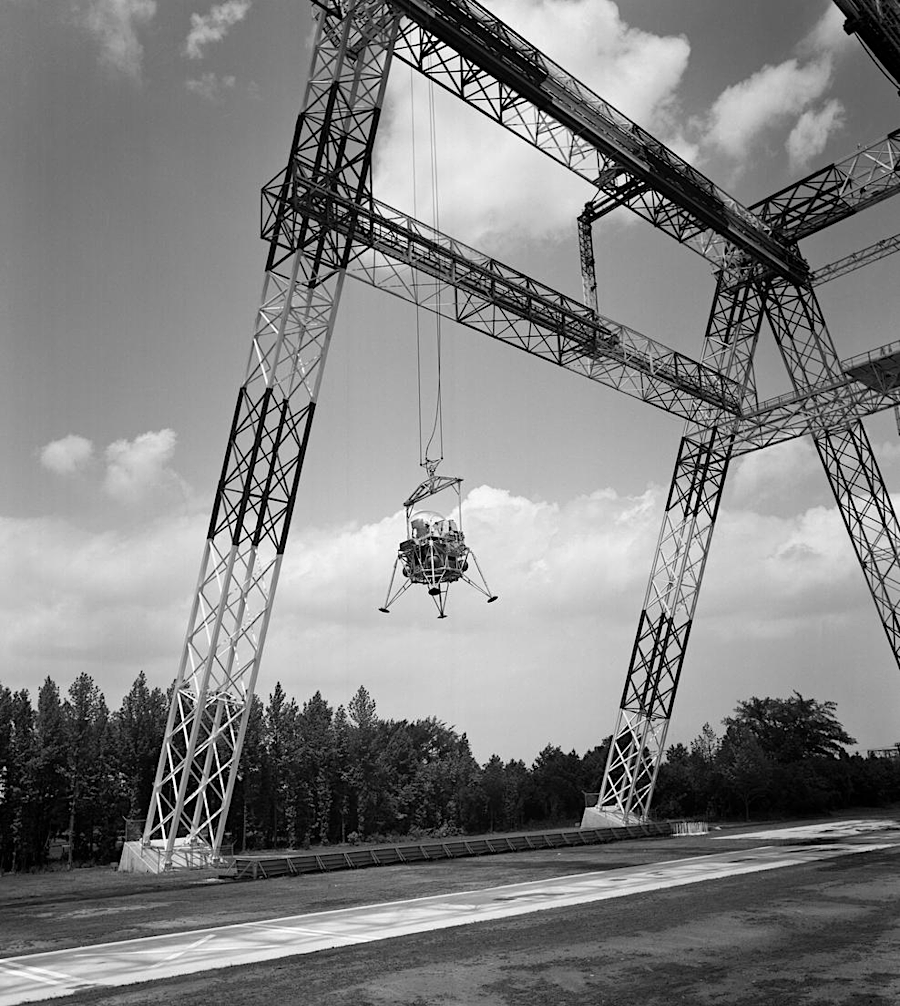
the Lunar Landing Research Facility, 250 feet high and 400 feet long, started testing equipment in 1965
Source: National Aeronautics and Space Administration, Lunar Landing Testing at NASA Langley

the Lunar Landing Research Facility, 250 feet high and 400 feet long, started testing equipment in 1965
Source: National Aeronautics and Space Administration, Lunar Landing Testing at NASA Langley
After realizing at the start of World War I that the European nations have developed more-advanced airplane technology, the US Congress created the National Advisory Committee for Aeronautics (NACA) in 1915. Though a civilian agency, it immediately developed a close partnership with the Department of the Army and the Department of the Navy, treating them as prime customers for the research.
The priority was aeronautical research. The agency mimicked the successful European approach and established a dedicated research laboratory.
The location chosen in 1920 for the Langley Memorial Aeronautical Laboratory was farmland near Hampton. That site had been recommended by the War Department because it:1
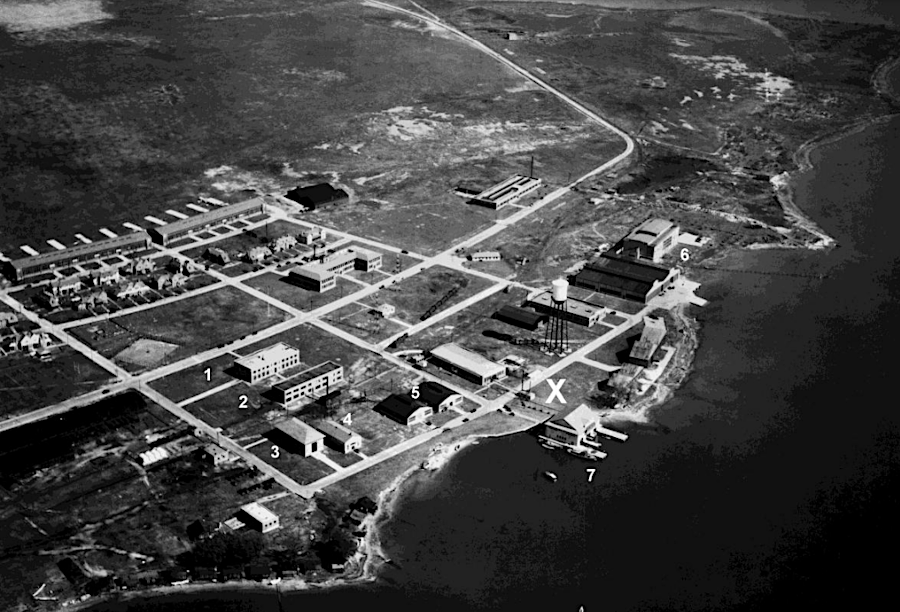
Langley Field in 1928
Source: National Aeronautics and Space Administration, A Critical Look at Langley's History: The Arrival of the Pressure Tank of the Variable Density Tunnel at Langley
The Langley facility focused on applied research, not theoretical science:2
The National Advisory Committee for Aeronautics built advanced wind tunnels and test equipment that measured new approaches to designing aircraft and missiles. The Variable Density Tunnel built in the 1920's was the first pressurized wind tunnel in the world. It used small models in an airstream with higher-than-atmospheric pressure to approximate actual conditions. The Full-Scale Tunnel dedicated on May 27, 1931 was the largest such facility in the world at the time - 434 feet in length, 222 feet in width and 97 feet in height.
The large wind tunnel allowed testing of aerodynamic effects of aircraft geometry at actual scale of aircraft and spacecraft, including new aircraft designs such as the delta wing and the Space Shuttle. The tunnel was upgraded in 1977 and 1984. When decommissioned in 1995, the facility was transferred to Old Dominion University (ODU) for engineering research. The almost 80-year old building was finally demolished in 2010.3
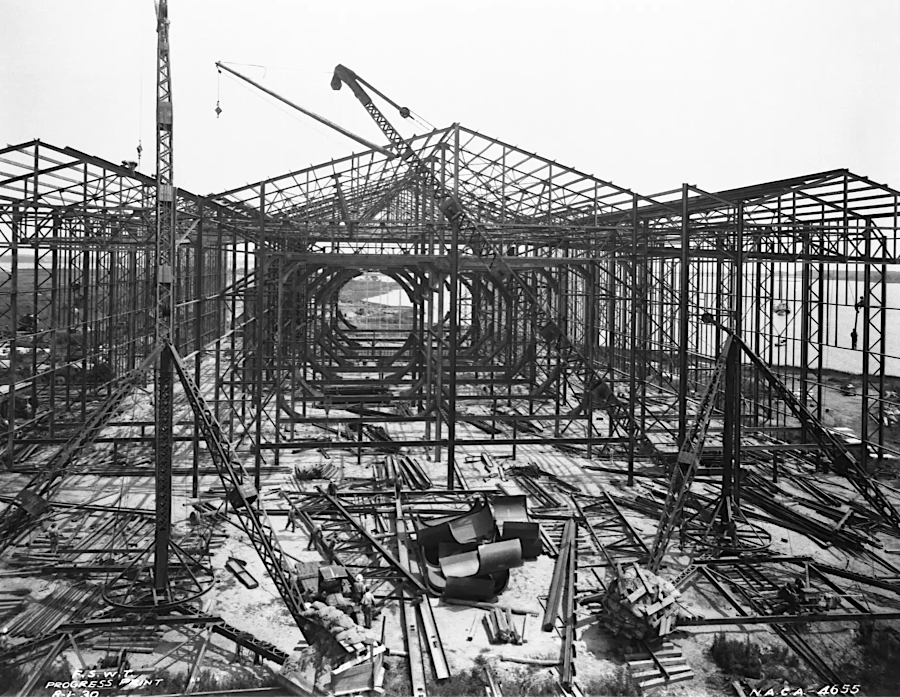
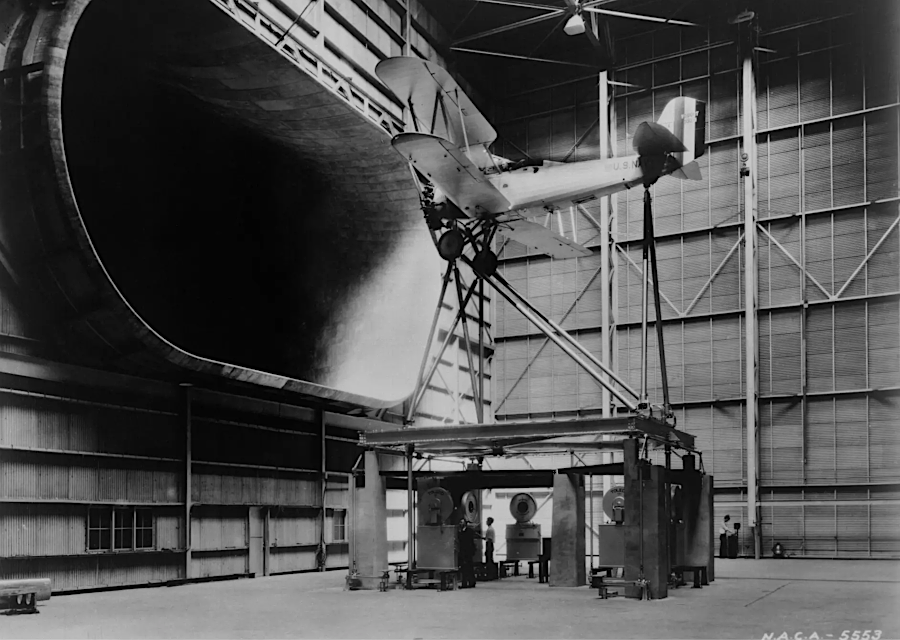
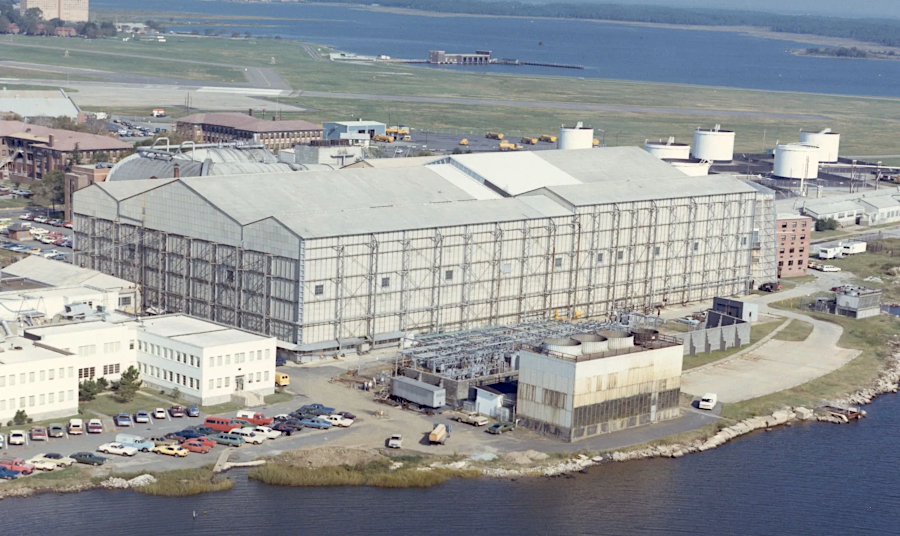
the Full-Scale Tunnel under construction in 1930, testing a full-sized Navy plane in 1931, and in 1979
Source: National Aeronautics and Space Administration, 30 x 60-Foot Full Scale Tunnel (Building 643)
The National Advisory Committee for Aeronautics opened two other laboratories before the United States entered World War II, rather than concentrate all research at Hampton. The Ames Laboratory in California was close to aircraft manufacturers interested in testing new designs. The Lewis Laboratory in Ohio was near factories that designed and maufactured aircraft engines.
in the 1940's, how equipment would behave near the speed of sound (Mach 1) was poorly understood. Some assessment of aerodynamic effects was done in the wind tunnels, but due to shock waves bouncing off the walls the test results were not clear. Researchers needed an Auxiliary Flight Research Station to test missile guidance and propulsion systems outdoors. The Langley engineers ended up choosing Wallops Island, near Chincoteague Naval Air Station.4
The 2016 movie Hidden Figures made famous the math and analysis done by black women at Langley Research Center. Mary Jackson, Katherine Johnson, and Dorothy Vaughan were known as "human computers:"5
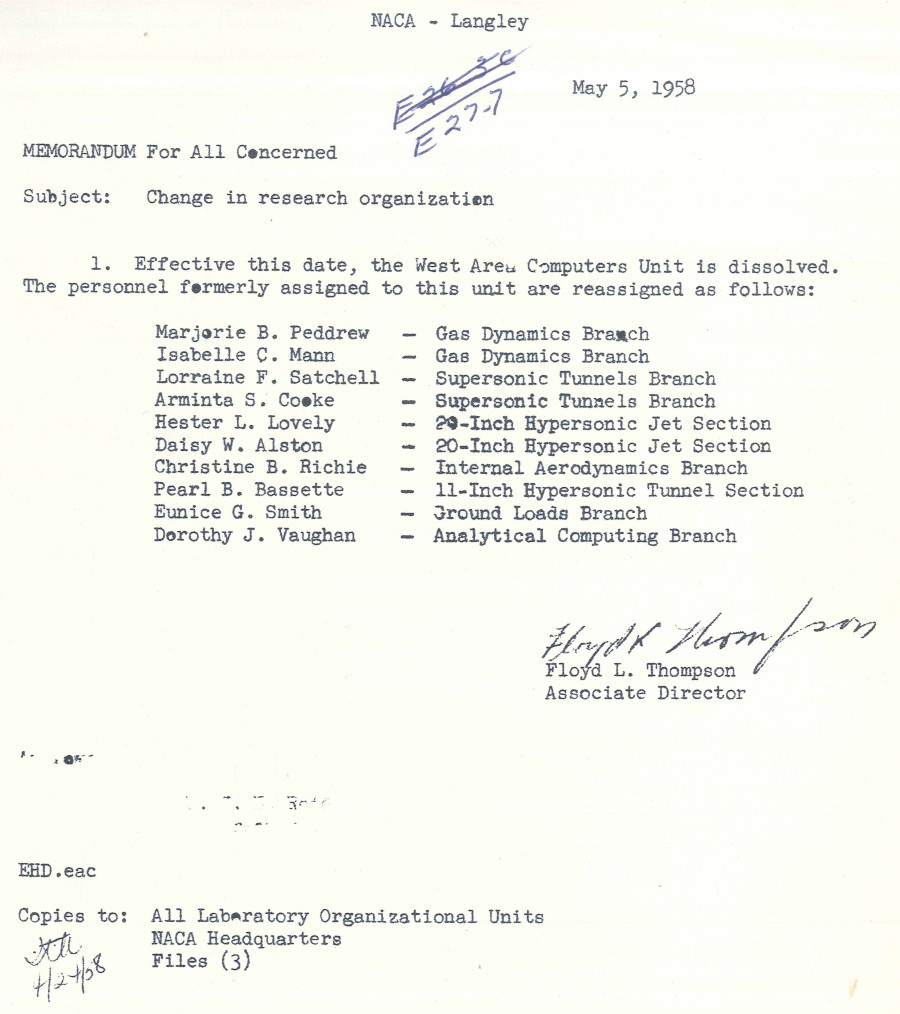
Langley Research Center desegregated in 1958 and reassigned its black female workers in the West Area Computers Unit to other groups
Source: National Archives, Memo from NACA Associate Director Floyd L. Thompson to all NACA Installations Regarding the Dissolution of the West Area Computers Unit (May 5, 1958)
The first wind tunnel at Langley was built in 1939. The 12-foot Low Speed Tunnel mimic takeoff and landing conditions for aircraft. In 1941, the Vertical Spin Tunnel supported research into how an airplane stalls.
A third wind tunnel at Langley Research Center was planned to go into operation in 2024. The Flight Dynamics Research Facility, was a vertical wind tunnel 130 feet all. It helped in testing spacecraft intended to go to Venus by and to Saturn's largest moon, Titan, by 2034.6
In 2024, flights to the moon using the National Aeronautics and Space Administration (NASA) Commercial Lunar Payload Services initiative began to rely upon new technology developed at Langley Research Center. Navigation Doppler Lidar (NDL) provided more accurate data than old radar-based technology about velocity and range as a spacecraft landed on the moon, and the new technology weighed far less. Stereo Cameras for Lunar Plume-Surface Studies (SCALPSS) provided stereo photogrammetry to create a three-dimensional (3D) image of the lunar surface as it was affected by a spacecraft's engine plume, potentially creating a crater that could threaten a safe landing.7
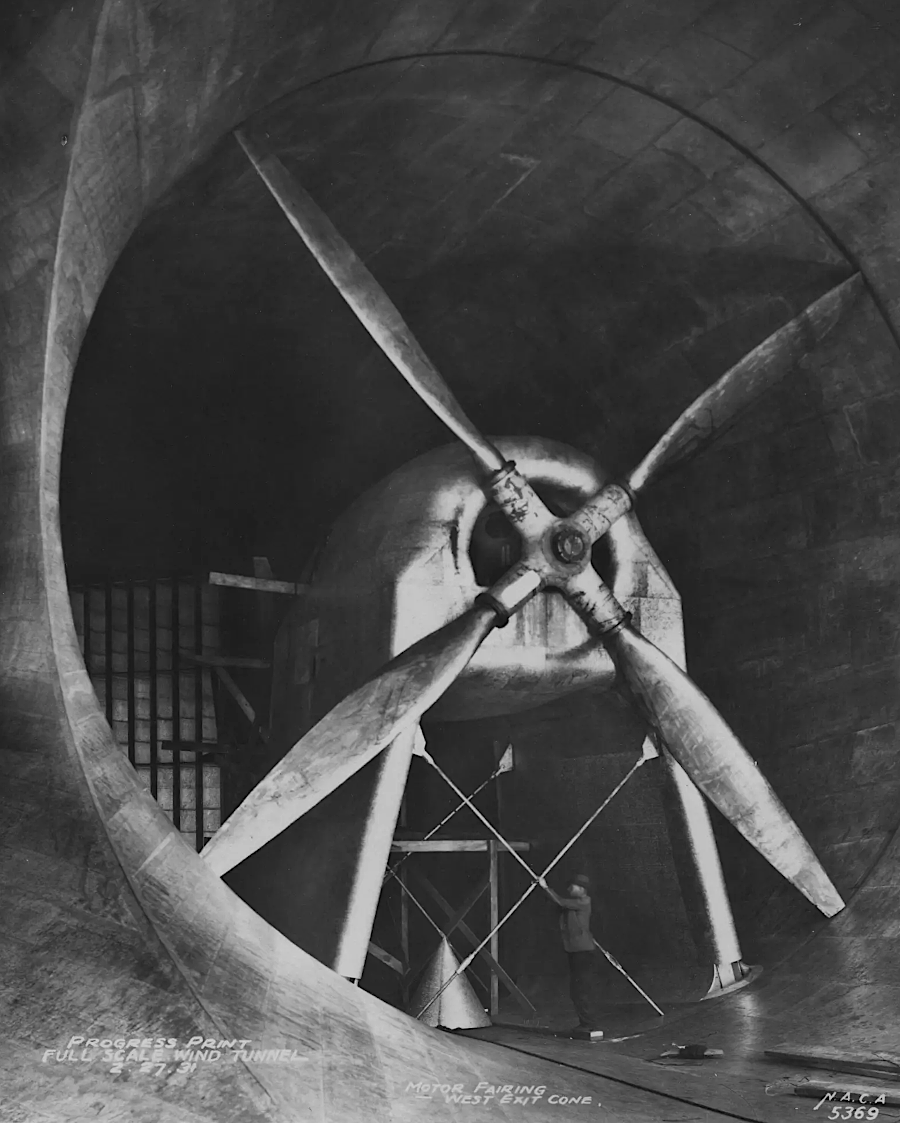
the Full-Scale Tunnel built in 1931 tested airplane, Project Mercury, Lunar Landing Test Vehicle, and Space Shuttle designs
Source: National Aeronautics and Space Administration, 30 x 60-Foot Full Scale Tunnel (Building 643)
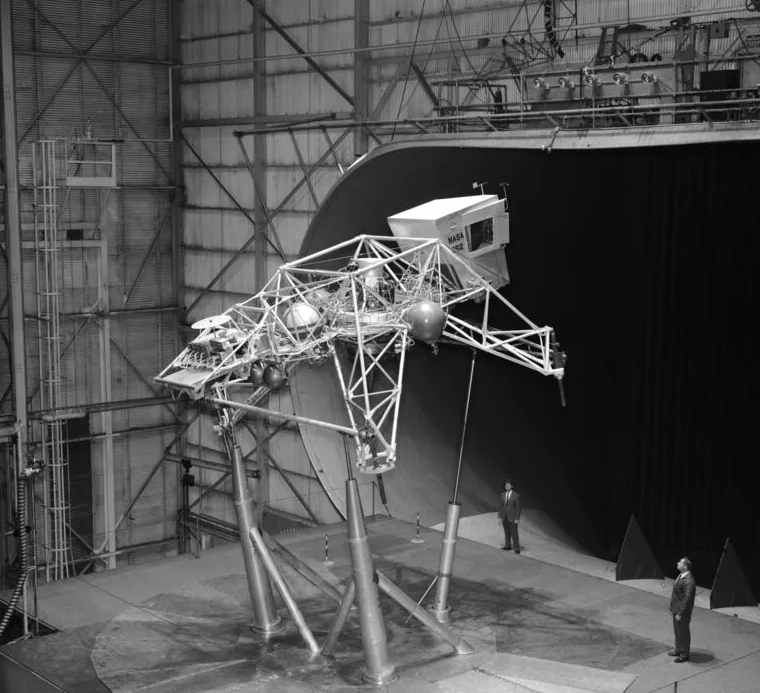
the Full-Scale Tunnel tested the aerodynamics of the Lunar Landing Research Vehicle, after one crashed in 1968 and Neil Armstrong had to parachute to safety
Source: National Aeronautics and Space Administration, 30 x 60-Foot Full Scale Tunnel (Building 643)
Source: National Aeronautics and Space Administration (NASA), Celebrating 100 Years of NASA Langley: A Storied Legacy, A Soaring Future